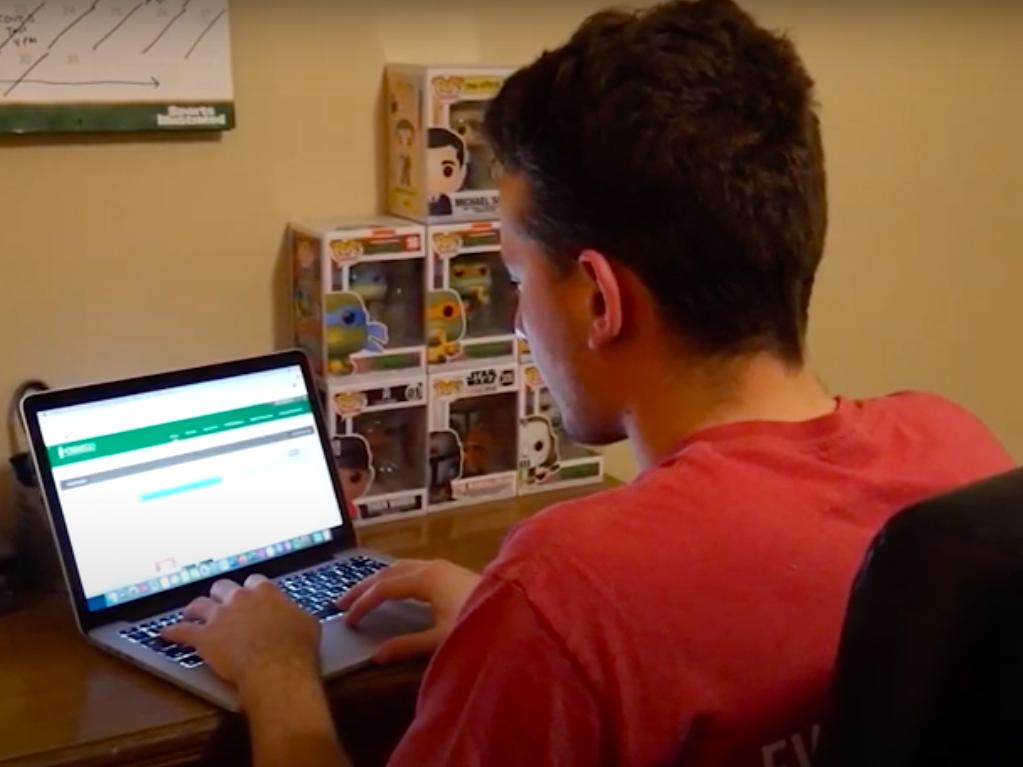(Image courtesy of the CMA 601 "Integrated Media Projects" course)
A group of master’s in strategic communication students, working a large-scale student survey from 2020, explored such topics as the educational value of online learning, the distracting nature of smartphones and more.
The Student Survey on Attitudes Toward Technology (SSATT) has been conducted annually for the last couple of years to collect information from freshmen and seniors regarding their relationship to the technologies they use as students and young adults. The data analysis and media design exercise is carried out by students in the CMA 601 “Integrated Media Projects” course, under the supervision of faculty advisor Ulises Mejias of the communication studies department, and with help of the college’s Office of Institutional Research and Assessment.
The class is working from a survey of the 326 students, acquired while students were working remotely after transitioning to online learning due to COVID-19 in spring 2020. The results showed that students' relationship with technology was improving, but their relationship with online learning was depreciating.
Among the findings on how students live and learn with technology:
- 73 percent of women disclosed that they find their cell phones distracting.
- 48 percent of men said that they find their cell phones distracting.
- Regardless of class standing, women surveyed found their cell phones to be distracting during class directly leading to a loss of focus.
- 85 percent of respondents agreed that they are using video chatting more now because of the pandemic as a means of avoiding catching a contagious disease.
- 70 percent of respondents agreed that they always cross check news stories across different news sources.
Some 2020 figures show the importance of access to reliable internet, as classes already shifted to learning online:
- 96 percent noted that they would not be able to maintain coursework without the internet.
- 67 percent disagreed that virtual and face-to-face courses offer equal educational value.
Building awareness
Strategic communication major Jakara New, said the findings are important in helping SUNY Oswego students and staff to better understand their relationship with technology, as well as for anybody interested in how technology can better improve one's learning.
“Technology is becoming a recurring theme in education. It’s becoming more widely accepted and integrated into education and it’s becoming more accepted and normalized as the pandemic continues progressing,” said New, who is an analyst on the project. “Technology is not fully normalized yet because people are still used to the old ways before the pandemic. But I think it’s slowly becoming way more normalized and accepted.”
Fellow strategic communication major Eddie Velazquez added that this data was especially relevant because it utilized attitudes from fellow students. Since it was the first survey with full remote learning in place, this gives an insight into how students are reacting to using technology during a pandemic.
“This is important because this project actually gets looked at by the school's institutional review board,” said Velazquez, who works on analyzing the data. As such, he hopes the data provides opportunities for positive changes.
New added that as technology advances and changes, consumers and users have to maintain their relationship and continue to improve it.
“I think that technology has gone from being something that was used as an accessory to being a necessity for education,” said New. “Because now if we don’t have high-speed internet or our laptop or cellphone connected to the internet or a service provider you would not be able to get a quality education.”
Both New and Velazquez believe that the pandemic affected and impacted the results of this survey. Primarily due to students' necessity to use technology while learning remotely.
“It definitely influenced the respondent's answers,” Velazquez said of the pandemic’s impact.
“The next survey, which goes out soon, will be important because it will examine the effects that the pandemic has on students with technology one year into the pandemic and online learning, “ said New.
The strategic communication master’s class has launched a new website with the SSATT results. The website and their @oswego.ssatt Instagram account will also offer tips on how students can improve their relationship with technology and decrease their distractions while learning online.
Visit the master's in strategic communication website to learn more about this graduate program.
-- Story by Jonathan Morrow of the Class of 2021




